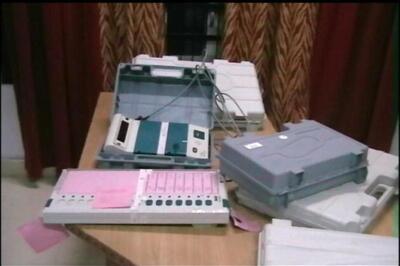
views
Afghans have broken the “shackles of slavery”, pronounced Imran Khan, the ‘noble’ Prime Minister of Pakistan, still distraught at the ‘martyrdom’ of Osama bin Laden by the American forces. Rawalpindi and Beijing are celebrating the swift capture of power by the Taliban after twenty years in the wilderness, and perhaps that is what Mr Khan was alluding to – the unshackling of the Taliban to impose puritanical Islam on the Afghan people.
In a dramatic reversal of fortunes, the mighty United States of America was reduced to seeking the Taliban’s support in evacuating its nationals and the vulnerable Afghans who had supported the American mission, out of the country. As of now, an estimated 10,000 Americans and 60,000 Afghans are yet to be flown out to safety.
Several questions arise. Was it inevitable that such a fate befell the hapless people of Afghanistan, particularly the women and children? After being invested in Afghanistan for 20 years, why was the US in such a hurry to cut and run? While Pakistan’s agenda in Afghanistan is well known, why has China too thrown its hat in the ring? Are the Talibs, seen sweating out in the presidential Palace gym in Kabul, a moderate and mellower version of their earlier 1995-2001 avatar, as claimed by some of their leaders and supporters? And finally, what are India’s options and would these developments have a resonance on the India-US ties?
The completely avoidable Afghanistan tragedy had been scripted by an indifferent United States, jihadi Pakistan, opportunistic China and a corrupt Afghan leadership. Expediency, side deals, coercion, disinformation, deceit, tribal royalties, inducements and much more have gone into installing Taliban in Kabul once again. They were virtually handed over the keys of Kabul when the US announced its decision on February 29, 2020, to quit Afghanistan by May 30, 2021, provided the Taliban did not attack the US forces in the interim. The elected Afghan government was kept out of the negotiations and completely undermined in the process. The countdown thus began for the Taliban and their minders in Rawalpindi.
After a two-decade-long engagement in Afghanistan, which cost the US dearly in human lives and treasure, it was ready to declare “mission accomplished” and pull out of the highly unpopular “forever war”. Washington kept shifting the goalposts but eventually settled for elimination of the terrorist threat to their country from Afghan soil as their principal objective. Nobody is to ask why they did not quit in 2003 when the Taliban were on the run. Realising that the Taliban were steadily gaining ground, at the expense of the Afghan National Army, President Joe Biden decided on an abrupt pull-out, believing that there would be a respectable gap before Kabul fell to the Islamic zealots.
Days after the departure of US forces, President Ghani addressed the nation to say that he was consulting world leaders and vowed to safeguard the “achievements” of the past 20 years. Within 24 hours, on August 15, he fled reportedly with suitcase loads of cash. It also meant that the American intelligence had failed miserably. As the allies bit their tongue and the widespread refrain of ‘told you so’ gained currency, the American credibility as a reliable partner is once again being called into question.
The disturbing memories of Vietnam have been revived. It has exposed the hiatus between the Biden administration’s assertions and actions. In plain terms, the standing of the US and its President has taken a hit. The only redeeming factor is that Joe Biden took ownership of his decision, saying time and again that the buck stopped at his table.
The redoubtable former ISI chief General Hamid Gul had presciently told a TV channel in 2014: “When history is written, it will be stated that the ISI, with the help of America, defeated America.” He explained how the ISI diverted American multi-billion-dollar assistance to sustain and nurture the Taliban.
It is inexplicable why the US continued to cut Pakistan so much slack despite knowing that it was playing snakes and ladders with everyone. To date, Washington is treating Islamabad not as the problem that it is but a solution.
In late July, Chinese Foreign Minister Wang Yi hosted a nine-member delegation, led by Taliban co-founder Mullah Abdul Ghani Baradar, asserting that the movement would be playing an important role in fostering “peace, reconciliation and reconstruction” in Afghanistan. It is moot whether the latter was shocked or pleased, as hitherto nobody had ever ‘accused’ the Taliban of being peaceful. Wang also extracted an assurance from Baradar that the Afghan soil would not be used by the ETIM (East Turkestan Islamic Movement) separatists against Chinese interests.
ETIM, an ethnic Uighur militant group, has been trying to avenge the humiliation being meted out to the Uighur Muslims in Xinjiang and carve out an independent state. Hundreds of them operate from adjoining Badakhshan, an Afghan province, which shares a rugged 76-kilometre border with Xinjiang. The Taliban are sympathetic to the Uighur cause but seem willing to make tactical peace with China.
China’s economic footprint is also rapidly expanding in Central Asia. With the US out of the way and the Taliban in control, Beijing hopes to start exploiting the huge mineral reserves including rare earth elements in Afghanistan believed to be worth a trillion dollars.
But would the Taliban actually play ball once they are in control? What is the real agenda of the Taliban 2.0? First the basics. The Taliban are neither monolithic, nor an organisation, nor do they have a charismatic leader like Mullah Omar whose word was law.
It is not even known who actually calls the shots and whether Mullah Haibatullah Akhundzada, said to be the Taliban’s third supreme commander, has the de facto authority? There is some speculation that he is being held in Pakistan. Rawalpindi, which has sustained, nurtured and armed the Taliban, would obviously have considerable leverage with them at least in the short term.
The Taliban leaders are telling the world that they are different; that excesses will not be committed; that women will be allowed to work and study; that they will not be revengeful and that while Afghanistan will not be a democracy, the application of Sharia laws will be humane. Is it possible to trust them? Can they rein in their cadres who have gone on a rampage in some areas under their occupation? Can a leopard change its spots? The honest answer is that nothing can be ruled in or ruled out at this juncture.
“History is replete with examples of revolutionaries turning into responsible rulers under the burden of office,” notes a former Foreign Minister of India.
The Mizo Accord of 1986 saw Mr Laldenga, the insurgent leader of Mizo National Front, becoming the chief minister of the newly created state of Mizoram. He had led a violent secessionist movement with the help of Pakistan. I had an opportunity to meet him in the US in early 1990. He had good things to say about the Union of India. Yasser Arafat, a dreaded terrorist, became the President of Palestine National Authority consequent to the Oslo Accord of September 1993 and even received a Nobel Peace Prize.
And then there is the power of social media, which was non-existent around 1995-2001. Over 70 per cent of Afghans have mobile phones now, many of which are internet-enabled smartphones. “It will not be nearly as easy for the Taliban to hide their abuses from the world or from fellow Afghans,” observes American political commentator Thomas Friedman.
And finally, where does India, the most popular country in Afghanistan, figure in the new scheme of things? New Delhi had kept the Taliban at an arm’s length but for back-channel contacts in recent months. Reportedly, they had requested the Indian mission to continue in Kabul and had assured its safety. Given their track record, and that two of India’s shuttered consulates were reportedly overrun by them recently, it is not possible for India to take anything at face value. Indian personnel in Kabul, in the prevailing circumstances, would have been hostage to the Taliban’s whims and fancies.
India’s best bet is to allow the dust to settle down, then make an informed decision. This may take weeks or even months. We have little or no leverage with the Taliban. However, if they walk the talk, there is no reason for India to shun them. Engaging with the Taliban does not necessarily mean an endorsement of their philosophy or behaviour; it is just a recognition that they are in effective control.
That said, India’s bigger dilemma and concern should pertain to American fickleness, which we can ill afford as we move towards constructing a new partnership with them. Many capitals including Tokyo, Seoul and Taipei must be contemplating getting back to the drawing board. At the minimum, we will do well to remain invested in Russia. These are trying times for Indian diplomacy
The author is Former Envoy to South Korea and Canada and Official Spokesperson of the Ministry of External Affairs. The views expressed in this article are those of the author and do not represent the stand of this publication.
Read all the Latest News, Breaking News and Assembly Elections Live Updates here.




















Comments
0 comment